The South Polar Skua is a formidable seabird that reigns over the icy expanses of the Southern Ocean. Here, we embark on a journey to unravel the mysteries surrounding this majestic avian predator.
The South Polar Skua, scientifically known as Stercorarius maccormicki, symbolizes resilience and adaptability in one of the harshest environments on Earth.
With its sleek form and keen hunting skills, this seabird navigates Antarctica’s frigid waters and icy shores with unmatched prowess.
Join us as we delve into the South Polar Skua’s fascinating life history, behaviors, and ecological significance.
From its relentless pursuit of prey to its intricate social dynamics, each aspect of its existence offers a glimpse into the complicated web of life in Earth’s southernmost reaches.
Prepare to be captivated by the untamed beauty and fierce spirit of the South Polar Skua as we venture deeper into its realm.
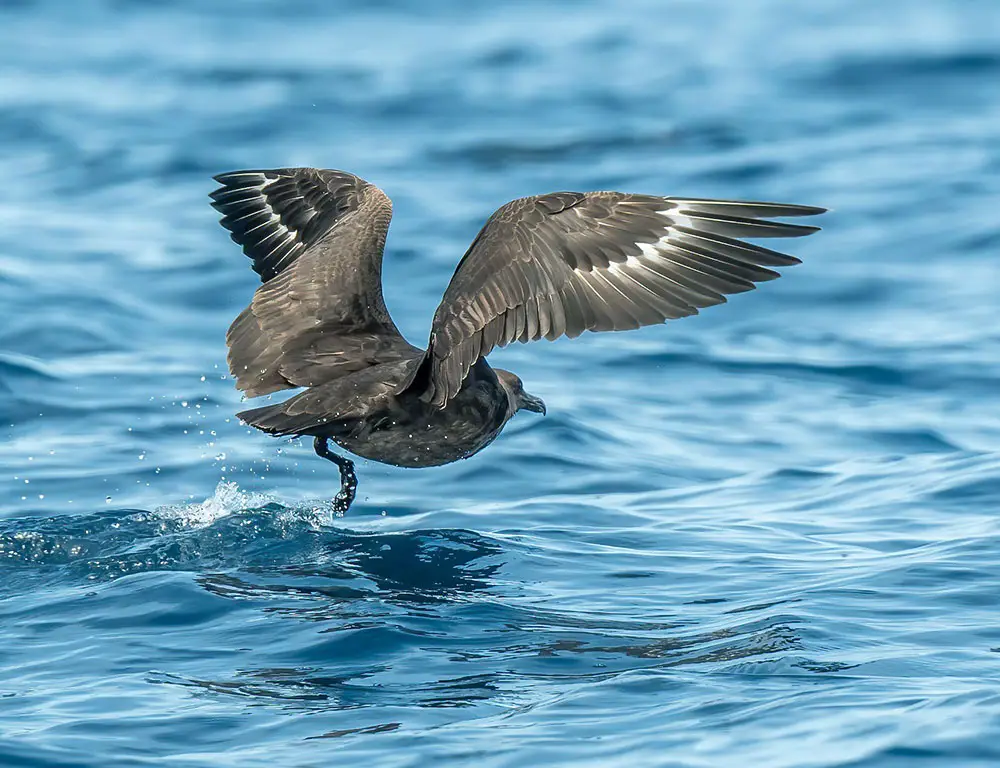
Identical Characteristics of South Polar Skua
Discover the distinctive identifying characteristics and intriguing habits of the South Polar Skua, a formidable seabird inhabiting Antarctica’s icy waters and shores.
Size and Appearance
The South Polar Skua is a medium-sized seabird, measuring approximately 50 to 60 centimeters in length and with a wingspan of about 120 to 140 centimeters.
It has a robust build, broad wings, and a slightly hooked bill. Its plumage varies between individuals and age classes.
Adults typically exhibit a dark brown or blackish coloration on the upper parts, while the underparts are paler and often streaked or mottled with white. Juveniles may have more mottled plumage overall.
Flight and Behavior
The South Polar Skua displays agile and powerful flight, often effortlessly gliding over the ocean’s surface or soaring on updrafts. It may exhibit a buoyant, erratic flight pattern while foraging or pursuing prey.
These skuas are opportunistic predators known for their scavenging behavior and active hunting of fish, squid, and other seabirds.
Bill and Talons
The South Polar Skua has a distinctive hooked bill, which it uses to grasp and tear apart prey items. The bill is sharp and well-suited for capturing and consuming a variety of prey, including fish, krill, and carrion.
Its talons are also formidable, allowing it to grasp and manipulate prey in flight and on the ground.
Voice
The South Polar Skua exhibits vocalizations varying from farmyard duck-like chatter during feeding to high-pitched, fast screams akin to large gulls.
Typically silent outside breeding grounds, their diverse vocal repertoire serves communication needs, reflecting their adaptability and behavior in different environmental contexts.
Foraging Behavior
South Polar Skuas employ a variety of foraging techniques to obtain food. They may engage in aerial pursuit of other seabirds, harassing them until they regurgitate food or drop prey items, which the skuas then capture mid-air.
Additionally, they scavenge for carrion and waste materials, opportunistically feeding on the remains of dead marine mammals, fish, and other seabirds.
Territoriality
South Polar Skuas are highly territorial during the breeding season. They aggressively defend their nesting sites from intruders, including other skuas and seabirds. Territorial disputes often involve aerial chases and vocal displays.
Taxonomy, Distribution, and Breeding Habits of the South Polar Skua
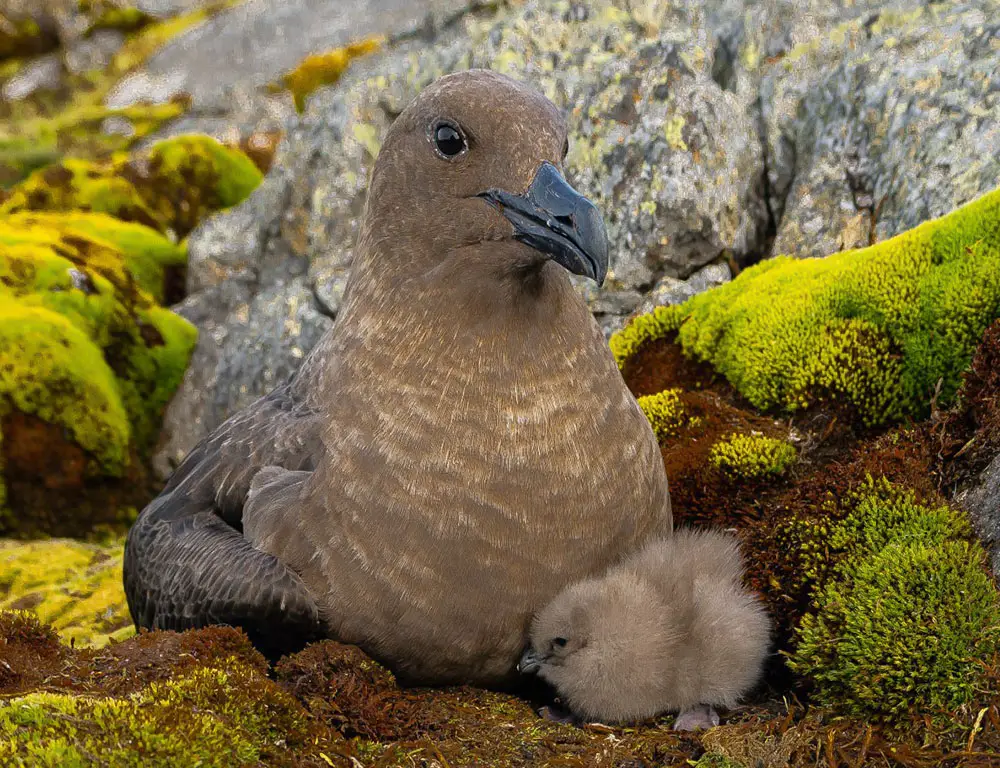
Explore the South Polar Skua’s taxonomy, distribution, and breeding habits, uncovering its role in the Antarctic ecosystem and its challenges in its icy habitat.
Taxonomy of the South Polar Skua
| Taxonomy Level | Classification |
| Kingdom | Animalia |
| Phylum | Chordata |
| Class | Aves |
| Order | Charadriiformes |
| Family | Stercorariidae |
| Genus | Stercorarius |
| Species | Stercorarius maccormicki |
Distribution of the South Polar Skua
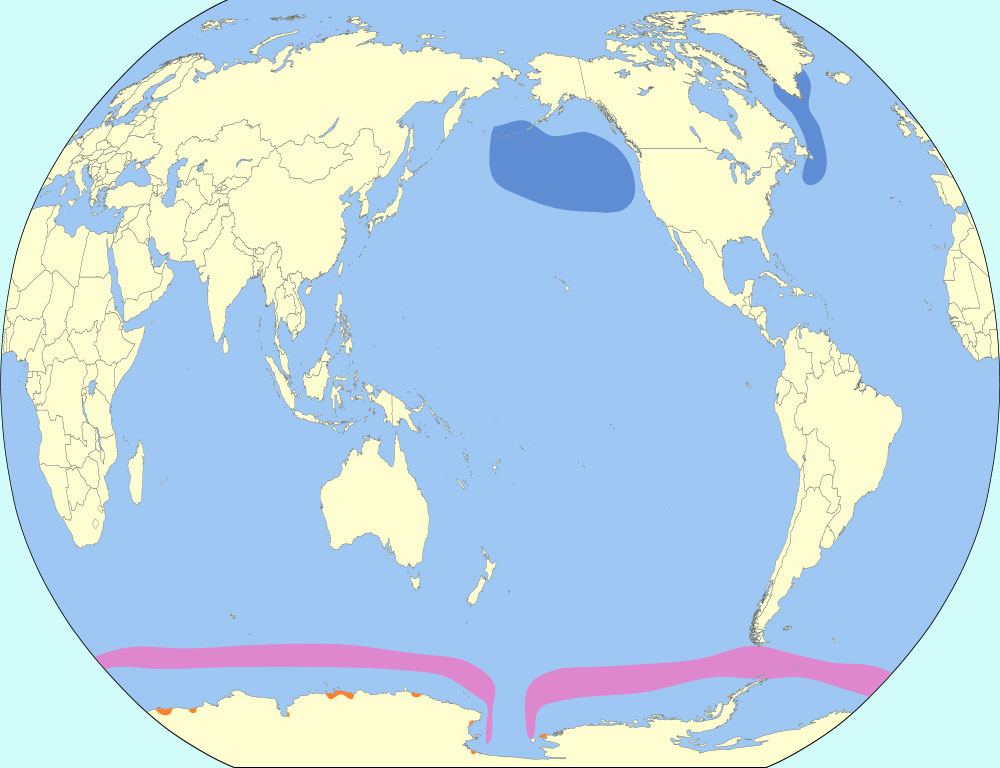
The South Polar Skua is primarily found in the Southern Hemisphere, breeding along the coastlines and islands of Antarctica. During the non-breeding season, it may disperse widely across the Southern Ocean, ranging from the Antarctic pack ice to subantarctic regions.
Food Habits of South Polar Skua
South Polar Skuas are opportunistic predators and scavengers. They feed on diverse prey, including fish, squid, krill, and other seabirds.
They also scavenge for carrion and waste materials, often stealing food from other seabirds through aggressive aerial pursuit.
Nesting Habits of the South Polar Skua
| Nesting Habit | Description |
| Nest Location | South Polar Skuas typically nest on coastal cliffs or rocky outcrops, where they can establish territories and defend against intruders. |
| Nest Structure | The nest is a shallow depression lined with moss, lichens, and feathers, providing insulation and cushioning for the eggs and chicks. |
| Incubation Period | Both parents share incubation duties, taking turns to keep the eggs warm for approximately 4 to 5 weeks until they hatch. |
| Chick Rearing | After hatching, the chicks are cared for and fed by both parents until they fledge, which occurs around 6 to 7 weeks after hatching. |
Breeding Habits of the South Polar Skua
Breeding occurs during the Antarctic summer, with pairs forming monogamous bonds and establishing nest territories. The female lays one to two eggs, and both parents share incubation and chick-rearing duties until the young fledge and become independent.
Conservation Status of the South Polar Skua
According to the International Union for Conservation of Nature (IUCN), the conservation status of the South Polar Skua is currently of least concern.
However, ongoing threats such as habitat loss, climate change, and disturbance from human activities may impact local populations and warrant monitoring and conservation efforts.
Predation and Feeding Ecology
Delve into the South Polar Skua’s predatory behavior and feeding ecology, examining its hunting strategies, prey preferences, and interactions with other marine organisms in the Southern Ocean.
Population Dynamics and Demography
Investigate the dynamics and demography of South Polar Skua populations, including factors influencing population trends such as breeding success, survival rates, and environmental variability.
Climate Change Impacts
Assess the potential impacts of climate change on the South Polar Skua and its Antarctic habitat, including changes in sea ice dynamics, shifts in prey availability, and alterations in breeding phenology.
What Are the Common Diseases and Treatments of the South Polar Skua?
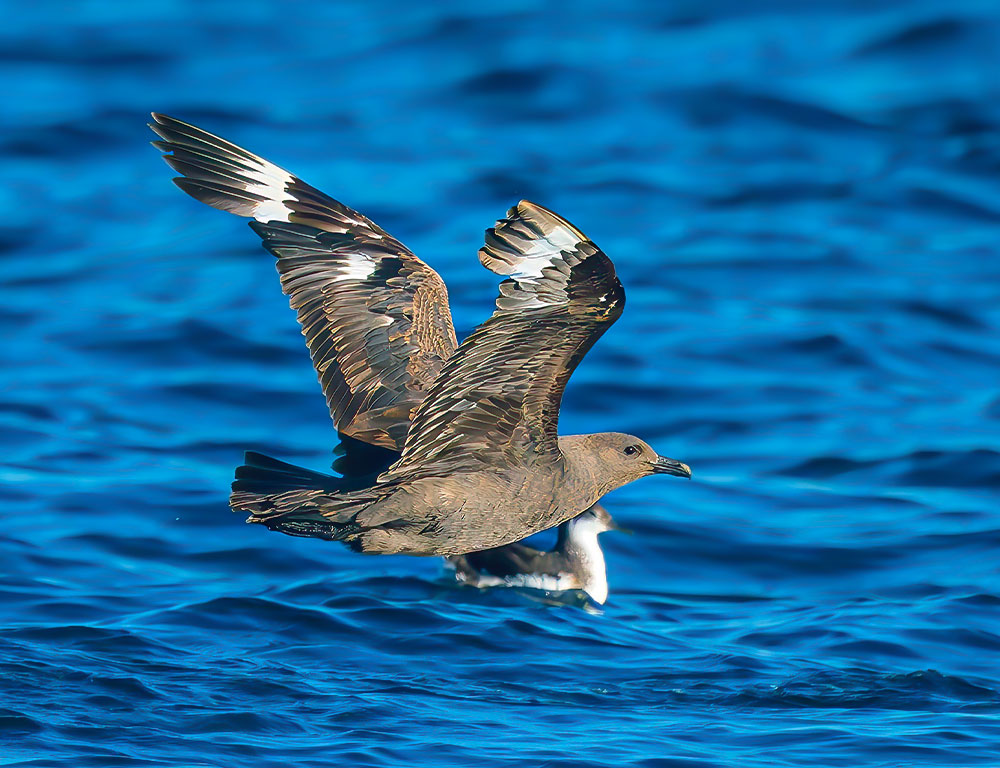
While the South Polar Skua faces various environmental challenges in its Antarctic habitat, diseases are not extensively documented in wild seabird populations.
However, like all birds, they are susceptible to certain illnesses, injuries, and parasites. Let’s explore potential health issues and treatments for the South Polar Skua.
Avian Pox
Avian pox is a viral disease affecting seabirds, including South Polar Skuas. It manifests as wart-like growths on the skin, beak, and feet, impairing the bird’s ability to feed and move.
Treatment typically involves supportive care to boost the bird’s immune system and reduce discomfort.
Aspergillosis
Aspergillosis is a fungal infection caused by the Aspergillus fungus, commonly found in soil and decaying organic matter.
Inhaling fungal spores can lead to respiratory distress and pneumonia in seabirds. Treatment may involve antifungal medications and supportive therapy to alleviate symptoms.
Injuries
South Polar Skuas are exposed to various environmental hazards, including rough weather conditions, predation attempts, and human disturbances.
Injuries such as fractures, wounds, and abrasions may require veterinary intervention. Treatment may include wound cleaning, antibiotics to prevent infection, and splinting for fractures.
Parasitic Infections
Parasitic infestations, such as lice, mites, and ticks, can affect the plumage and overall health of South Polar Skuas. External parasites may cause irritation, feather damage, and skin lesions.
Treatment options include topical insecticides, bathing to remove parasites, and habitat management to reduce parasite populations.
Nutritional Deficiencies
Inadequate nutrition can compromise the health and vitality of South Polar Skuas, particularly during periods of food scarcity or environmental stress.
Common nutritional deficiencies may include vitamin imbalances, mineral deficiencies, and protein malnutrition. Treatment involves dietary supplementation and the provision of balanced nutrition to meet the bird’s requirements.
Environmental Toxins
South Polar Skuas may be exposed to environmental toxins such as heavy metals, pesticides, and oil spills, which can harm their health.
Treatment involves minimizing exposure to contaminated environments and providing supportive care to mitigate the effects of toxin ingestion.
Monitoring and Research
Given the remote and harsh environment of the Antarctic, monitoring the health of South Polar Skua populations is challenging.
Research efforts focused on disease surveillance, population health assessments, and understanding the impact of environmental stressors are essential for conservation and management initiatives.
6 Interesting Facts About the South Polar Skua
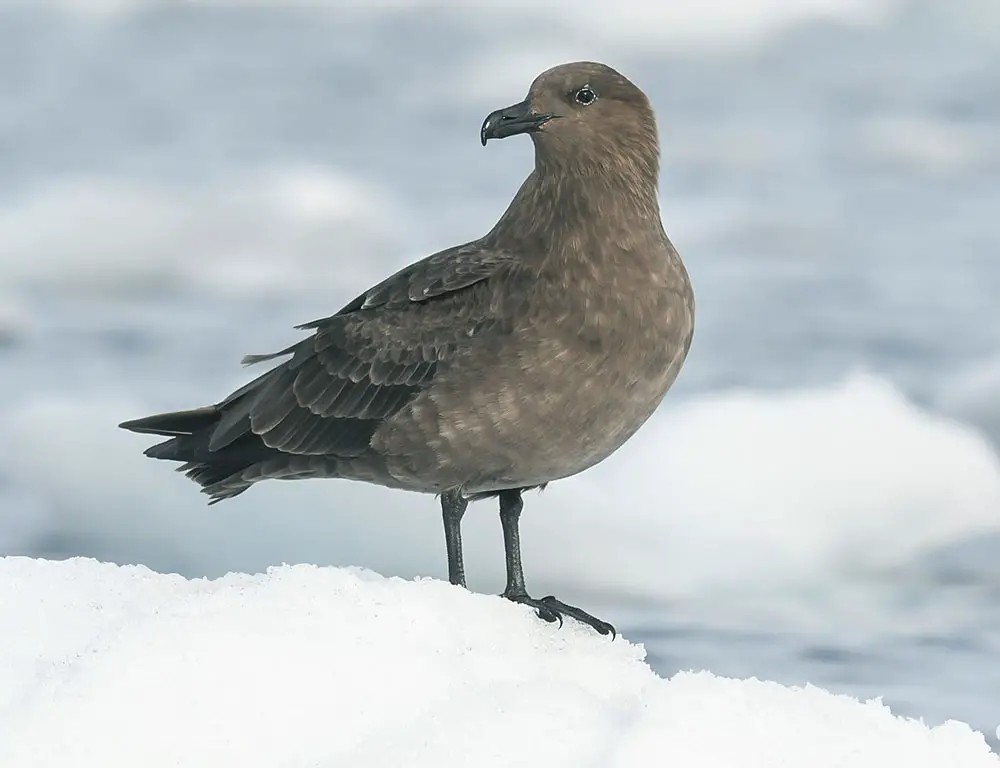
Uncover five fascinating facts about the South Polar Skua, shedding light on its remarkable adaptations and unique behaviors in the icy realms of Antarctica.
1. Piratical Predators
South Polar Skuas are known as “pirates of the Antarctic skies” for their aggressive kleptoparasitic behavior. They often harass other seabirds, forcing them to regurgitate their food, which the skuas then steal mid-air.
2. Nomadic Wanderers
Despite their association with Antarctica, South Polar Skuas are highly nomadic and may undertake long-distance migrations across the Southern Ocean in search of food and suitable breeding sites.
3. Mimicry Masters
South Polar Skuas are adept mimics, capable of imitating the calls of other seabirds to deceive and manipulate them. This mimicry helps them attract potential prey or intimidate competitors during territorial disputes.
4. Egg Camouflage
South Polar Skuas have evolved remarkable egg camouflage to protect their nests from predators. The eggs are cryptically colored, blending seamlessly with the surrounding rocks and vegetation, making them difficult to detect by predators such as skuas and gulls.
5. Colonial Breeders
During the breeding season, South Polar Skuas often nest in colonies, congregating in large numbers on coastal cliffs or rocky outcrops. This colonial nesting behavior protects against predators and facilitates cooperative defense of nesting territories.
FAQs
What is the habitat of the South Polar Skua?
The South Polar Skua inhabits Antarctica’s coastal regions and offshore waters, nesting on rocky outcrops or cliffs and foraging over the icy waters of the Southern Ocean.
How do South Polar Skuas hunt for food?
South Polar Skuas employ a variety of hunting strategies, including aerial pursuit of other seabirds, scavenging for carrion, and kleptoparasitism, where they steal food from other birds by harassing them until they regurgitate their meals.
Are South Polar Skuas migratory birds?
Yes, South Polar Skuas are migratory birds. During the non-breeding season, they undertake long-distance migrations across the Southern Ocean to access food resources in different regions.
Do South Polar Skuas mate for life?
South Polar Skuas form monogamous breeding pairs during the breeding season, but whether they mate for life is not definitively known. They typically return to the same nesting site with the same partner each breeding season.
Does climate change threaten South Polar Skuas?
Climate change poses potential threats to South Polar Skuas and their Antarctic habitat, including alterations in sea ice dynamics, shifts in prey availability, and changes in nesting site suitability. Monitoring and conservation efforts are essential to mitigate these impacts.
Conclusion
The South Polar Skua is a remarkable testament to the resilience and adaptability of life in the Antarctic region. With its sleek silhouette soaring over the icy waters, it embodies the spirit of survival in one of the planet’s most extreme environments.
As we bid farewell to our exploration of this magnificent seabird, we are reminded of the delicate balance of nature in the Southern Ocean and the interconnectedness of all living organisms in this fragile ecosystem.
We have gained insights into the complex web of interactions that sustain the South Polar Skua’s existence, from its role as a top predator to its interactions with other marine species.
By understanding and appreciating the significance of this seabird within its habitat, we are inspired to continue conserving Antarctica’s pristine wilderness, ensuring a future where the South Polar Skua continues to soar gracefully.